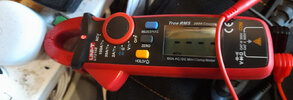Hi
I turned on my bathroom light + fan yesterday and the bulb blew which took out all of the flats lighting circuit. 1960s build.
I’ve since changed the entire light fitting as the bulb went fairly badly, but I cannot regain lighting in the whole flat.
I’ve check the available Wylex fuse wires - all fine.
I’ve checked the internals of all light switches - all seemingly fine.
I’ve checked most light fittings in the flat and again all fine.
So any advice please gratefully received before I have to resort to calling someone out!
I turned on my bathroom light + fan yesterday and the bulb blew which took out all of the flats lighting circuit. 1960s build.
I’ve since changed the entire light fitting as the bulb went fairly badly, but I cannot regain lighting in the whole flat.
I’ve check the available Wylex fuse wires - all fine.
I’ve checked the internals of all light switches - all seemingly fine.
I’ve checked most light fittings in the flat and again all fine.
So any advice please gratefully received before I have to resort to calling someone out!


